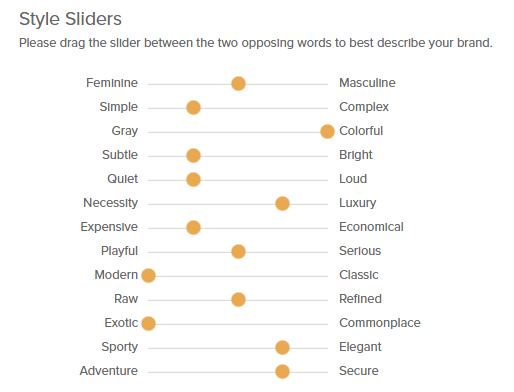What does sustainability mean in the context of graphic design?
Sustainability in graphic design refers to the ethical practices of producing work without making negative impacts on the environment. Graphic Designers should always endeavor to find creative design solutions that are also eco-friendly.
Sometimes this can mean using more natural and bio-degradable materials to create products and packaging. In some cases it means removing the packaging completely and following the current trend of 'naked products'.
Review the site 'Design Can Change - AIGA' and answer the following questions:
What is 'cradle to cradle' design and how can you see this applied in the Graphic Design industry?
Cradle to cradle design uses biomimicry in its processes of engineering to create systems and products that are environmentally friendly. It does this by using strictly, non-toxic synthetic products combined with natural, bio-degradable products, In doing so, it prevents waste and the spread of harmful, toxic materials throughout our environment.
Cradle to cradle design can be applied to graphic design in a few different ways. One obvious solution is to find more opportunities to keep design digital to avoid the waste of paper from printing. If you must print a design, it's possible to find more eco-friendly inks made from natural resources such as vegetables. It's also excellent if you can find design solutions that use fewer resources to decrease the amount of waste you produce.
In the 'Creative Gallery on Sustainable Communications '- what ad has the most impact for you and why?
I like this ad for its highly visual nature. I believe that a really good advertisement doesn't need a lot of text to tell the audience a story. The use of negative space makes the image much more eye catching and intriguing, causing the viewer to wonder what the ad is about until they take a step closer.
So because the image draws you in and makes you want to know more, it makes the ad highly effective. I also like the tagline because its eloquent and simple. Overall I think it gets the message across quickly and is visually pleasing.
List five things that a Graphic Designer can do in their practice to decrease their impact on the environment
Graphic designers should always work toward creating waste free and eco-friendly design solutions including the following:
1. Use natural, bio-degradable products such as vegetable based inks for printing.
2. Encourage digital solutions to design problems to decrease waste.
3. Create re-usable products rather than disposable ones to reduce waste.
4. Consider using production methods that require less transport so as to contribute less to pollution.
5. Discuss with clients openly the sustainable design options to spread awareness.
Sustainability in graphic design refers to the ethical practices of producing work without making negative impacts on the environment. Graphic Designers should always endeavor to find creative design solutions that are also eco-friendly.
Sometimes this can mean using more natural and bio-degradable materials to create products and packaging. In some cases it means removing the packaging completely and following the current trend of 'naked products'.
Review the site 'Design Can Change - AIGA' and answer the following questions:
What is 'cradle to cradle' design and how can you see this applied in the Graphic Design industry?
Cradle to cradle design uses biomimicry in its processes of engineering to create systems and products that are environmentally friendly. It does this by using strictly, non-toxic synthetic products combined with natural, bio-degradable products, In doing so, it prevents waste and the spread of harmful, toxic materials throughout our environment.
Cradle to cradle design can be applied to graphic design in a few different ways. One obvious solution is to find more opportunities to keep design digital to avoid the waste of paper from printing. If you must print a design, it's possible to find more eco-friendly inks made from natural resources such as vegetables. It's also excellent if you can find design solutions that use fewer resources to decrease the amount of waste you produce.
In the 'Creative Gallery on Sustainable Communications '- what ad has the most impact for you and why?
I like this ad for its highly visual nature. I believe that a really good advertisement doesn't need a lot of text to tell the audience a story. The use of negative space makes the image much more eye catching and intriguing, causing the viewer to wonder what the ad is about until they take a step closer.
So because the image draws you in and makes you want to know more, it makes the ad highly effective. I also like the tagline because its eloquent and simple. Overall I think it gets the message across quickly and is visually pleasing.
List five things that a Graphic Designer can do in their practice to decrease their impact on the environment
Graphic designers should always work toward creating waste free and eco-friendly design solutions including the following:
1. Use natural, bio-degradable products such as vegetable based inks for printing.
2. Encourage digital solutions to design problems to decrease waste.
3. Create re-usable products rather than disposable ones to reduce waste.
4. Consider using production methods that require less transport so as to contribute less to pollution.
5. Discuss with clients openly the sustainable design options to spread awareness.




















